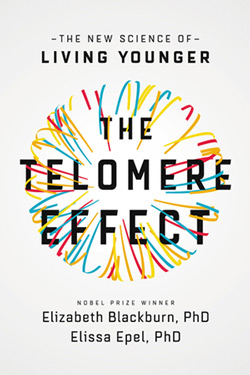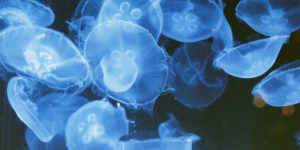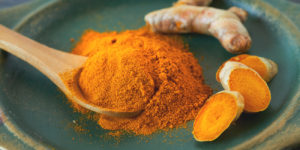The Cellular Connection to Longevity: Telomeres, Aging and the Keys to Lifelong Health
[EXCERPT FROM THE TELOMERE EFFECT BOOK]
BY ELIZABETH BLACKBURN, Ph.D. & ELISSA EPEL Ph.D
 researchers may have finally cracked the code to aging—the length and health of our telomeres, which are tiny but extraordinarily important pieces of genetic code stored deep within our cells.
researchers may have finally cracked the code to aging—the length and health of our telomeres, which are tiny but extraordinarily important pieces of genetic code stored deep within our cells.
What Are Telomeres and Why They Matter: The Keys to Longer Lifespan
Deep into the genetic heart of your cells—on your chromosomes—is where you’ll find telomeres (tee- lo- meres), repeating segments of noncoding DNA that live at the ends of your chromosomes. Telomeres, which shorten with each cell division, help determine how fast your cells age and when they die, depending on how quickly they wear down. The extraordinary discovery from our research labs and other research labs around the world is that the ends of our chromosomes can actually lengthen—and as a result of our telomeres, aging is a dynamic process that can be accelerated or slowed, and in some aspects, aging can even be reversed. Aging need not be, as thought for so long, a one-way slippery slope toward infirmity and decay. We all will get older, but how we age is very much dependent on our cellular health.
To an extent that has surprised us and the rest of the scientific community, telomeres do not simply carry out the commands issued by your genetic code. Your telomeres, it turns out, are listening to you. They absorb the instructions you give them. The way you live can, in effect, tell your telomeres to speed up the process of cellular aging. But it can also do the opposite—reverse aging. The foods you eat, your response to emotional challenges, the amount of exercise you get, whether you were exposed to childhood stress, and even the level of trust and safety in your neighborhood—all of these factors and more appear to influence your telomeres and can prevent premature aging at the cellular level. In short, one of the keys to a long healthspan is simply doing your part to foster healthy cell renewal, which can be done by learning how to lengthen telomeres.
Healthy Cell Renewal and Why You Need It: How Long Can Our Cells Last?
In 1961, before we knew about telomeres and aging, the biologist Leonard Hayflick discovered that normal human cells can divide a finite number of times before they die. Cells reproduce by making copies of themselves (called mitosis), and as the human cells sat in a thin, transparent layer in the flasks that filled Hayflick’s lab, they would, at first, copy themselves rapidly. As they multiplied, Hayflick needed more and more flasks to contain the growing cell cultures. The cells in this early stage multiplied so quickly that it was impossible to save all the cultures; otherwise, as Hayflick remembers, he and his assistant would have been “driven out of the laboratory and the research building by culture bottles.” Hayflick called this youthful phase of cell division “luxuriant growth.” After a while, though, the reproducing cells in Hayflick’s lab stopped in their tracks, as if they were getting tired. The longest-lasting cells managed about fifty cell divisions, although most divided far fewer times. Eventually these tired cells reached a stage he called senescence: They were still alive but they had all stopped dividing, permanently. This is called the Hayflick limit, the natural limit that human cells have for dividing, and the stop switch happens to be telomeres that have become critically short, This is the link between telomeres and aging.
Immortal Cells
Are all cells subject to this Hayflick limit? No. Throughout our bodies we find cells that renew—including immune cells, bone cells, gut, lung and liver cells, skin and hair cells, pancreatic cells, and the cells that line our cardiovascular systems. They need to divide over and over and over to keep our bodies healthy. Renewing cells include some types of normal cells that can divide, like immune cells; progenitor cells, which can keep dividing even longer; and those critical cells in our bodies called stem cells, which can divide indefinitely as long as they are healthy. And, unlike those cells in Hayflick’s lab dishes, cells don’t always have a Hayflick limit, because they have telomerase. Stem cells, if kept healthy, have enough telomerase to enable them to keep dividing throughout our life spans.
When too many of your cells are senescent, your body’s tissues start to age—this is part of the connection between telomeres and aging. For example, when you have too many senescent cells in the walls of your blood vessels, your arteries stiffen and you are more likely to have a heart attack. When the infection-fighting immune cells in your bloodstream can’t tell when a virus is nearby because they are senescent, you are more susceptible to catching the flu or pneumonia. Senescent cells can leak pro-inflammatory substances that make you vulnerable to more pain, more chronic illness. Eventually, many senescent cells will undergo a preprogrammed death. The diseasespan begins.Many healthy human cells can divide repeatedly, so long as their telomeres (and other crucial building blocks of cells like proteins) remain functional. After that, as telomere shortening occurs, the cells become senescent. Eventually, senescence can even happen to our amazing stem cells. This limit on cells dividing is one reason that there seems to be a natural winding down of the human healthspan as we age into our seventies and eighties, although of course many people live healthy lives much longer. With new research on telomeres and aging, a good healthspan and life span, reaching eighty to one hundred years for some of us and many of our children, is within our reach. [1]
A New Generation of Longevity: The Growing Population of Centenarians and What We Can Learn From Them
There are around three hundred thousand centenarians worldwide, and their numbers are rapidly increasing. Even more so are the numbers of people living into their nineties. Based on trends, it is thought that over one-third of children born in the United Kingdom now will live to one hundred years. [2] How many of those years will be darkened by diseasespan? If we better understand how to lengthen telomeres and the levers on good cell renewal and factors that stall or reverse aging, we can have joints that move fluidly, lungs that breathe easily, immune cells that fiercely fight infections, a heart that keeps pumping your blood through its four chambers, and a brain that is sharp throughout the elderly years.
But sometimes when it comes to telomeres and aging cells don’t make it through all their divisions in the way they should. Sometimes they stop dividing earlier, falling into an old, senescent stage before their time. When this happens, you don’t get those eight or nine great decades. Instead, you get premature cellular aging. Chronological age is the major determinant of when we get diseases, and this reflects our biological aging inside.
Why do people age differently? One reason is cellular aging. Now the question becomes, What causes cells to get old before their time? For an answer to this question, think of shoelaces.
How Telomeres Can Make You Feel Old or Help You Stay Young and Healthy
Do you remember the protective plastic tips at the ends of shoelaces? These are called aglets. The aglets are there to keep shoelaces from fraying. Now imagine that your shoelaces are your chromosomes, the structures inside your cells that carry your genetic information. Telomeres, which can be measured in units of DNA known as base pairs, are like the aglets; they form little caps at the ends of the chromosomes and keep the genetic material from unraveling. They are the aglets of aging. But telomere length tends to shorten over time.
Here’s a typical trajectory for the life of a human’s telomere:
Age and Telomere Length (in base pairs)
Newborn baby: 10,000 base pairs
35 years old: 7,500 base pairs
65 years old: 4,800 base pairs
When your shoelace tips wear down too far, the shoelaces become unusable. You may as well throw them away. Something similar happens to cells. When telomeres become too short, the cell stops dividing altogether. Telomere shortening isn’t the only reason a cell can become senescent. There are other stresses on normal cells that we don’t yet understand very well. But short telomeres are one of the primary reasons human cells grow old, and they are one mechanism that controls the Hayflick limit.
Your genes affect your telomeres and aging, they effect telomere lengthening when you’re born and how quickly they dwindle down. But the wonderful news is that our research, along with research from around the globe, has shown you can step in and take some control of how short or long—how robust—they are.
For instance:
+ Some of us respond to difficult situations by feeling highly threatened—and this response is linked to shorter telomere length. We can reframe our view of situations in a more positive way.
+ Several mind-body techniques, including meditation and Qigong, have been shown to reduce stress and to increase telomerase, the enzyme that replenishes telomeres.
+ Exercise that promotes cardiovascular fitness is great for telomeres and aging. We describe two simple workout programs that have been shown to improve telomere maintenance, and these programs can accommodate all fitness levels.
+ Telomeres hate processed meats like hot dogs, but fresh, whole foods are good for them.
+ Neighborhoods that are low in social cohesion—meaning that people don’t know and trust one another—are bad for telomeres. This is true no matter what the income level.
+ Children who are exposed to several adverse life events have shorter telomeres. Moving children away from neglectful circumstances (such as the notorious Romanian orphanages) can reverse some of the damage.
+ Telomeres on the parents’ chromosomes in the egg and sperm are directly transmitted to the developing baby. Remarkably, this means that if your parents had hard lives that shortened their telomeres, they could have passed those shortened telomeres on to you! If you think that might be the case, don’t panic. Telomeres can build up as well as shorten. You can still take action and learn how to lengthen your telomeres. And this news also means that our own life choices can result in a positive cellular legacy for the next generation.
Make the Telomere Connection
When you think about living in a healthier way, you may think, with a groan, about a long list of things you ought to be doing to increase health and reverse aging. For some people, though, when they have seen and understood the connection between their actions, their telomeres and aging, they are able to make changes that last. When I (Liz) walk to the office, people sometimes stop me to say, “Look, I’m biking to work now—I’m keeping my telomeres long!” Or “I stopped drinking sugary soda. I hated to think of what it was doing to my telomeres.”
What’s Ahead
Does our research show that by learning how to lengthen telomeres you will live into your hundreds, or run marathons when you’re ninety-four, or stay wrinkle free? No. Everyone’s cells become old and eventually we die. But imagine that you’re driving on a highway. There are fast lanes, there are slow lanes, and there are lanes in between. You can drive in the fast lane, barreling toward the diseasespan at an accelerated pace. Or you can drive in a slower lane, taking more time to enjoy the weather, the music, and the company in the passenger seat. And, of course, you’ll enjoy your good health.
Activating Telomerase: 3 Proven Practices for How to Lengthen Your Telomeres
Decades of research into telomerase activity has revealed that there are some core lifestyle shifts that you can make to lengthen your telomeres, improve overall cell health and potentially reverse aging. Try integrating the following practices into your daily routine for maximum benefit.
1. Mindfulness and Meditation
Much of the research around telomerase activity has revealed that chronic stress can have (although not always!) a negative impact on telomere lengthening and health. While temporary and occasional incidences of stress are normal and even beneficial in many cases, long-term stress can cause aging and telomere damage if left unchecked. This is usually the result of things like consistent negative thought patterns, feelings of anxiety, fear, depression and shame, worrying about the future, living or working in a consistently stressful environment, and being cynical or pessimistic, among other things. To counter the negative effects many of these habits have and to go even one step further and begin to rewire your mind so they stop occurring in the first place, try practicing mindfulness meditation regularly.
In one study of volunteers who practiced mindfulness-based stress reduction techniques for eight weeks, researchers found increased gray-matter density in the hippocampus, which is known to be an important area of the brain for learning and memory. They also noticed gray-matter thickening and growth in other brain structures associated with self-awareness, compassion, and introspection. Nearly all participants reported significant reductions in stress, which was reflected physically in their brains by decreased grey-matter density in the amygdala, which is a structure associated with anxiety and stress. [3]
Furthermore, a study by Spanish researchers suggests that highly experienced Zen meditators have longer telomeres on average than people of a similar age and lifestyle. The research also hints that the psychological factors underpinning this beneficial effect were that the meditators had a more compassionate, accepting outlook on life. [4]
Try this simple but powerful 3-minute breathing practice to get started with your mindfulness meditation habit and is a great exercise to reduce stress, lengthen your telomeres and reverse aging.
Exercise: Three-Minute Mindful Breathing Break
The pioneers of MBCT (mindfulness-based cognitive therapy)—John Teasdale, Mark Williams, and Zindel Segal—have developed training programs to help people attain the being mode, which is great for the health of your telomeres and reversing aging. It is best to work with a practitioner to help you fully learn MBCT, but you can easily take advantage of a core activity of MBCT, which is a quick, three-minute “time in.” [5] This breathing break is like practicing thought awareness.
You might recognize that you are feeling something painful. You label your thoughts, allowing them to exist in your mind, and know that they will pass. The lifetime of an emotion, even a very unpleasant one, is no longer than ninety seconds—unless you try to chase it away or engage with it. Then it lasts longer. The breathing break is a way to keep negative emotions from living past their natural life spans and has positive effects on your telomeres and aging. You can make it a habit, which is a key for all of the strategies for how to lengthen your telomeres, so it helps anchor you at any time, not just during hard moments. You can picture this exercise like an hourglass—invite whatever is present in your mind broadly, then focus narrowly on the breath, and then expand awareness out to your full surroundings. Here’s our modified version:
Becoming aware: Sit upright and close your eyes. Connect with your breathing for a long inhalation and exhalation. With this awareness, ask yourself, “What is my experience right now? What are my thoughts? Feelings? Bodily sensations?” Wait for the responses. Acknowledge your experience and label your feelings, even if they are unwanted. Notice any pushing away of your experience, and soften around it, allowing space for all that comes up in your awareness.
Gathering your attention: Gently direct your full attention to your breathing. Notice each inhalation and each long exhalation. Follow each breath, one after another. Use your breathing as an anchor into this present moment. Tune in to a state of stillness that is always there right below the surface of your thoughts. This stillness allows you to come from a place of being (versus doing).
Expanding your awareness: Sense your field of awareness expanding around you, around your breathing, around your whole body. Notice your posture, your hands, your toes, your facial muscles. Soften any tension. Befriend all of your sensations, greet them with kindness. With this expanded awareness connect with your whole being, encompassing all that is you in the present moment.
This breathing break calms your body and offers you more control over your stress reactions, which has a positive effect on your telomeres and aging. It shifts your thinking away from self-focus and the doing mode and moves it toward the peaceful being mode.
2. Practice Yoga, Qigong or Other Forms of Exercise
There has been much research over the years showing that various forms of exercise as well as meditative exercises like yoga and Qigong have a number of health benefits from improving mood to reducing inflammation in the body and plenty in between. However, many studies have also shown positive effects at the genetic level as well, with the types of exercises outlined below, and Qigong in particular, showing increased telomere length and health.
Researchers Christian Werner and Ulrich Laufs of Saarland University Medical Center in Homburg, Germany, tested three types of exercise in a small but exciting study. Their results hint that exercise really may increase telomerase’s replenishing action—and they help us understand which kinds of exercise are best for keeping our cells healthy. Two kinds of exercise stood out. Moderate aerobic endurance exercise, performed three times a week for forty-five minutes at a time, for six months, increased telomerase activity twofold. So did high-intensity interval training (HIIT), in which short bursts of heart-pounding activity are alternated with periods of recovery. Resistance exercise had no significant effect on telomerase activity (although it had other benefits; the researchers concluded that “resistance exercise should be complementary to endurance training rather than a substitute”). And all three forms of exercise led to improvements in age- and telomere-associated proteins (such as telomere-protecting protein TRF2) and reduced an important marker of cellular aging known as p16. [6] The results suggest that these specific types of exercise may play a role in reversing aging. They also found that regardless of exercise type, those who increased their aerobic fitness the most had greater increases in telomerase activity. This tells us it’s the underlying cardiovascular fitness that matters most.
So there you have it. Choose your favorite form of exercise or mindful movement (yoga, Qigong, etc.) that is in line with the above guidelines and your DNA and cells will be thanking you as a result.
3. Eat Telomere-Protecting Foods
As you might have guessed, what you eat has an impact on age and telomere health primarily through modulating inflammation, oxidative stress and insulin levels in the body. Rather than dive into all the research directly, we’ve summarized some general dietary recommendations for how to lengthen telomeres that are easy to follow below that you can use to make lifestyle changes that support cellular health.
Food, Drinks and Telomere Length*
Associated with Shorter Telomeres
Foods and Drinks: Red meat, processed meat; white bread; sweetened drinks, sweetened soda; saturated fat; omega-6 polyunsaturated fats (linoleic acid); high alcohol consumption (more than 4 drinks per day)
Vitamins: Iron-only supplements (probably because they tend to be high doses)
Associated with Longer Telomeres
Foods and Drinks: Fiber (whole grains); vegetables; nuts, legumes; seaweed; fruits; omega‑3s (e.g., salmon, arctic char, mackerel, tuna, or sardines); dietary antioxidants, including fruits, vegetables, but also beans, nuts, seeds, whole grains, and green tea; coffee
Vitamins: Vitamin D (mixed evidence); Vitamin B (folate), Vitamin C, and Vitamin E; Multivitamin supplements (mixed evidence)
*Note that the scientific literature here is growing and changing all the time. Check our website for updates!
 This article on telomeres and aging is excerpted with permission from The Telomere Effect: A Revolutionary Approach to Living Younger, Healthier, Longer by Dr. Elizabeth Blackburn and Dr. Elissa Epel.
This article on telomeres and aging is excerpted with permission from The Telomere Effect: A Revolutionary Approach to Living Younger, Healthier, Longer by Dr. Elizabeth Blackburn and Dr. Elissa Epel.
About The Author
Elizabeth Blackburn, Ph.D., received the Nobel Prize in Physiology or Medicine in 2009 alongside two colleagues for their discovery of telomerase and telomeres’ role in the aging process. She is currently president of the Salk Institute and was elected president of the American Association for Cancer Research. She is a recipient of the Albert Lasker Basic Medical Research Award, among many other awards, and in 2007 she was named one of TIME magazine’s 100 most influential people. Learn more at: profiles.ucsf.edu/elizabeth.blackburn
Elissa Epel, Ph.D., is a leading health psychologist who studies stress, aging, and obesity. She is the director of UCSF’s Aging, Metabolism, and Emotions Center and is associate director of the Center for Health and Community. She is a member of the National Academy of Medicine and serves on scientific advisory committees for the National Institutes of Health and the Mind and Life Institute. She has received awards from Stanford University, the Society of Behavioral Medicine, and the American Psychological Association. Visit her website at: amecenter.ucsf.edu
References
1. Christensen, K., G. Doblhammer, R. Rau, and J. W. Vaupel, “Ageing Populations: The Challenges Ahead,” Lancet 374, no. 9696 (October 3, 2009): 1196–1208, doi:10.1016/S0140- 6736(09)61460‑4.
2. United Kingdom, Office for National Statistics, “One Third of Babies Born in 2013 Are Expected to Live to 100,” December 11, 2013, The National Archive, accessed November 30, 2015.
3. Hölzel, B. K., Carmody, J., Vangel, M., Congleton, C., Yerramsetti, S. M., Gard, T., & Lazar, S. W. (2011). “Mindfulness Practice Leads to Increases in Regional Brain Gray Matter Density,” Psychiatry Research, 191(1), 36–43.
4. Alda, M., et al., “Zen Meditation, Length of Telomeres, and the Role of Experiential Avoidance and Compassion,” Mindfulness 7, no. 3 (June 2016): 651–659.
5. Segal, Z., J. M. G. Williams, and J. Teasdale, Mindfulness-Based Cognitive Therapy for Depression, 2nd ed. (New York: Guilford Press, 2013): 74–75. (The Three-minute breathing space is part of the MBCT program. Our breathing break is a modified version).
6. Werner, C. et al., “Differential Effects of Aerobic Endurance, Interval and Strength Endurance Training on Telomerase Activity and Senescence Marker Expression in Circulating Mononuclear Cells,” European Heart Journal 36 (abstract supplement) (August 2015): P2370.






















